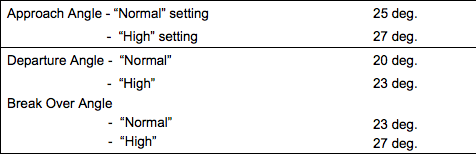r2m
Richard
- Thread starter
- #681
One thing I wasn't expecting was to get a little more kick-in-the-pants from a stand still.
Gains of over a second in 0-60 times and almost a second in the quarter mile run at 4 mph faster!
That may come in handy on those 2 lane roads passing semi's and RV's on the HWY 395 to Tahoe.
Was really hoping for at least mid-20's ish mpg, not just one tick up from the previous model.
After I get through building it, I'll be down to the same mileage I get now.
Gains of over a second in 0-60 times and almost a second in the quarter mile run at 4 mph faster!
That may come in handy on those 2 lane roads passing semi's and RV's on the HWY 395 to Tahoe.
Was really hoping for at least mid-20's ish mpg, not just one tick up from the previous model.
After I get through building it, I'll be down to the same mileage I get now.
Last edited:




